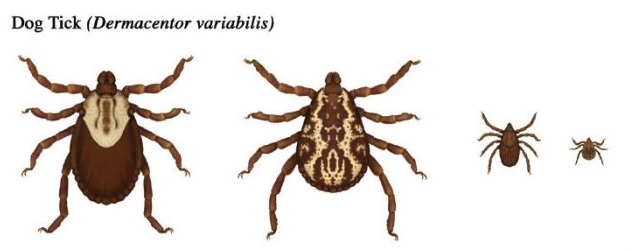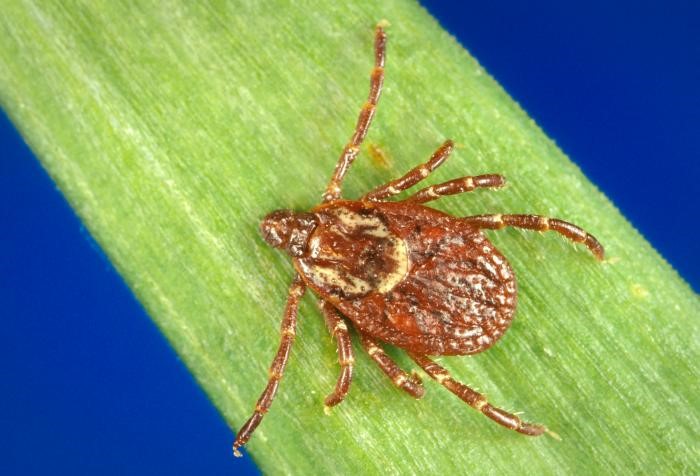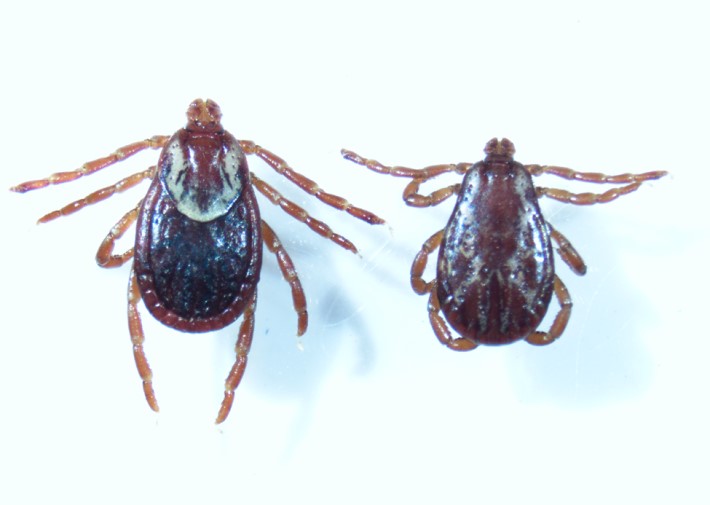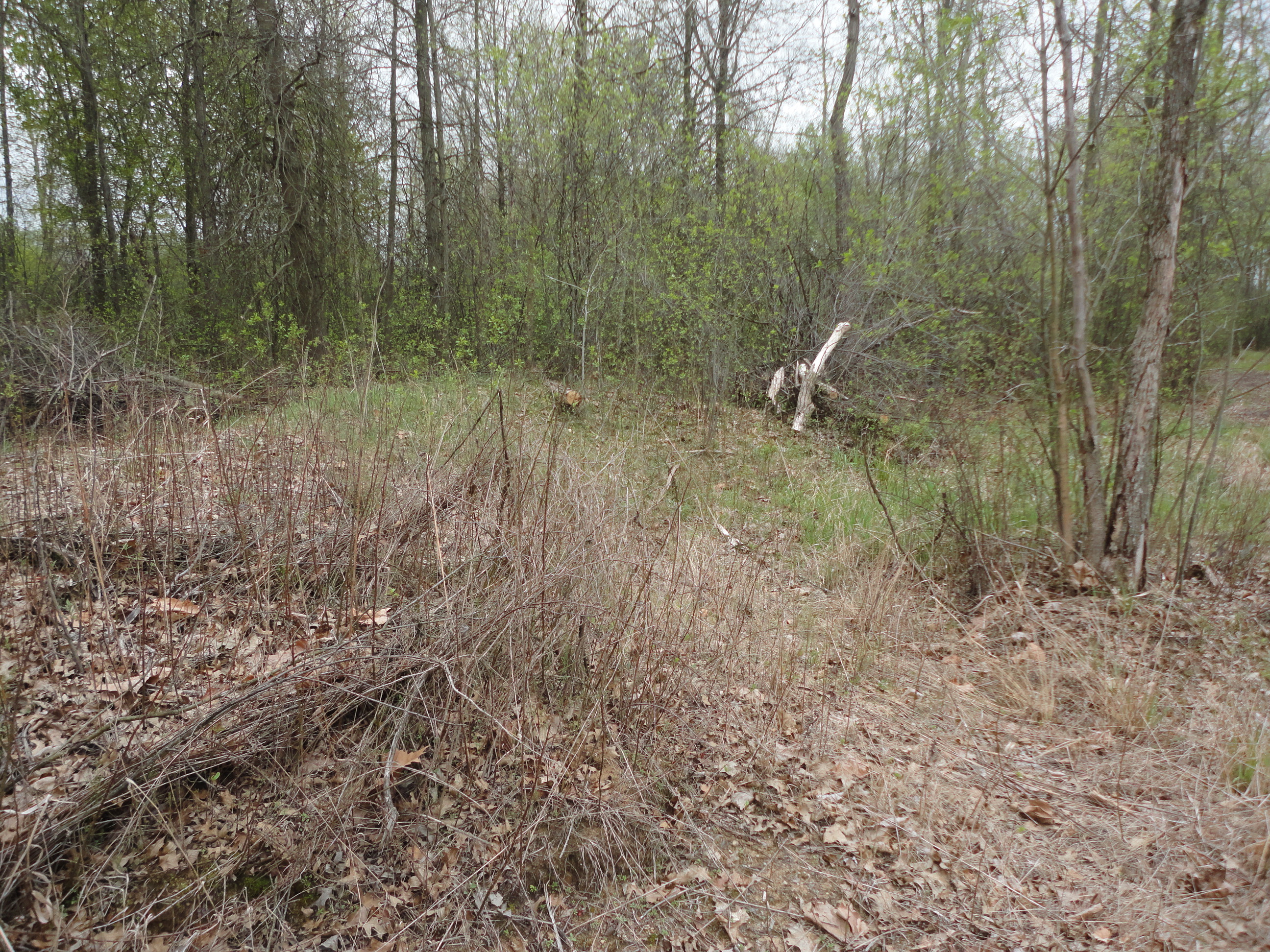Common names: American dog tick, wood tick

Graphic: Centers for Disease Control and Prevention.
- Geographic Distribution
Present in all Indiana counties. Widely distributed east of the Rocky Mountains. Also inhabits limited areas on the Pacific Coast. Click here to see the geographic distribution of ticks that bite humans in the United States.
American dog tick habitat. Photo: Indiana Department of Health.
- Life Cycle
Adult ticks most often feed on dogs and other large mammals, including humans. The American dog tick life cycle consists of four stages (egg, larva, nymph and adult) and can take as many as two years to complete. Larvae and nymphs usually feed on small mammals, such as rodents. Most American dog tick activity occurs in spring and summer.
- Commonly Associated Diseases
- Prevention
The best way to prevent diseases associated with American dog ticks is to avoid tick bites. Please see our tick prevention page for more information.
Please visit the Midwest Center of Excellence in Vector-Borne Disease webpage for more information about American dog ticks.
- Images

Female American dog tick (Dermacentor variabilis). Photo: Centers for Disease Control and Prevention.

Female (left) and male (right) American dog ticks (Dermacentor variabilis). Photo: Indiana State Department of Health.
Page last reviewed/updated: February 2025

